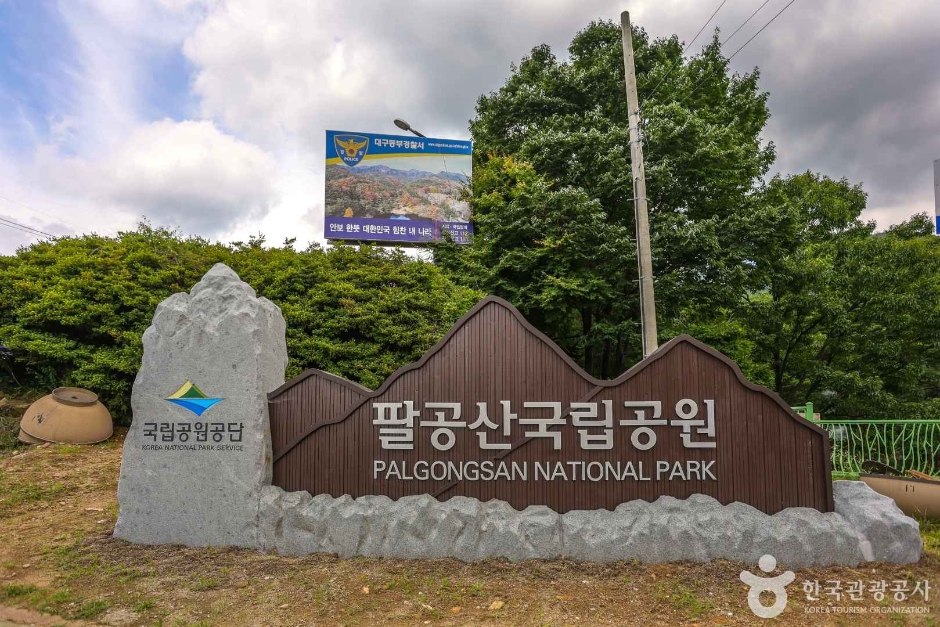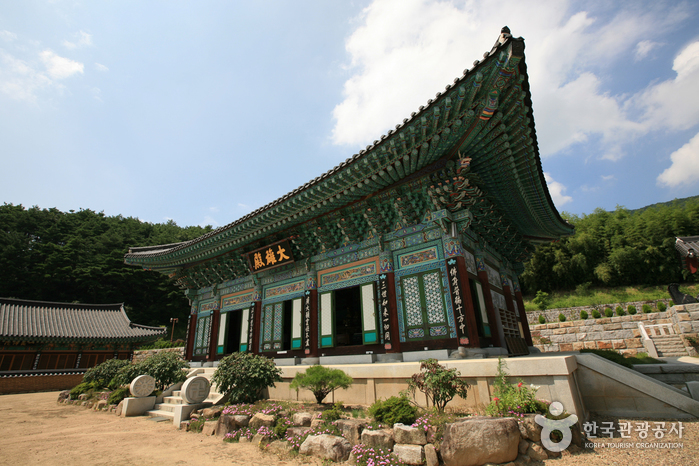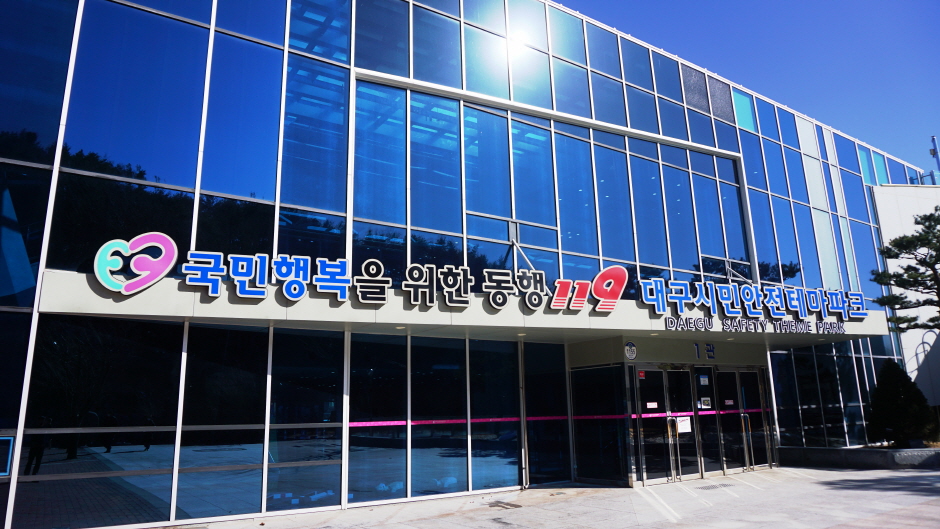Daegu Spa Valley (대구 스파밸리)
13.3Km 2025-08-12
891 Gachang-ro, Gachang-myeon, Dalseong-gun, Daegu
+82-1688-8511
Daegu Spa Valley is a year-round water park offering various water attractions and hot springs. It features a 250m lazy river pool, Speed Slides, Jungle Aqua, hot spring saunas, Aqua Play, and both indoor and outdoor water playgrounds. There are water park experience programs available for day trips or overnight stays.
Daegu Stadium (대구스타디움)
13.7Km 2022-06-30
180, Universiad-ro, Suseong-gu, Daegu
+82-53-803-8300
Daegu Stadium is a sports stadium located in Daeheung-dong, Suseong-gu in Daegu. Construction of the stadium began on July 28, 1997 and was completed on May 20, 2001. Its roof is designed to resemble a globe, incorporating the beautiful curves found in the roofs of traditional Korean houses.
The stadium seats approximately 66,000 people and is suitable for hosting large-scale international sports games and 74% of the seats are protected by a Teflon-coated overhang. The 47,407 square meter stadium has three stories below ground and three above ground floors and is built on a 512,479 square meters of land just 9 kilometers southeast of the city’s downtown area.
Stadium facilities include a gymnasium, baseball field, indoor ice rink, horseback riding track, tennis court, fitness center, shooting range, archery range, skateboard park, and an indoor jogging course. There are smaller buildings for taekwondo, judo, and rock climbing.
Daegu Stadium has hosted a number of 2002 FIFA World Cup matches; Senegal vs. Denmark (June 6), Slovenia vs. South Africa (June 8), Korea vs. U.S.A. (June 10) and Korea vs. Republic of Turkiye (June 29).
Olive Young - Daegu Siji Branch [Tax Refund Shop] (올리브영 대구시지)
14.6Km 2024-04-18
3214, Dalgubeol-daero, Suseong-gu, Daegu
-
Palgongsan National Park (Pagyesa Temple District) (팔공산국립공원(파계사지구))
14.8Km 2025-04-08
741 Pagye-ro, Dong-gu, Daegu
+82-53-939-0080
Palgongsan National Park is located close to Palgongsan Mountain, one of the larger mountains in the Taebaek Mountain Range. Palgongsan Mountain is located 20 kilometers northeast from downtown Daegu, where Nakdonggang River and Geumhogang River meet. The mountain has three peaks in a row: Birobong Peak in the center and Dongbong Peak (aka Mitabong, 1,155 m) and Seobong Peak (aka Samseongbong, 1,150 m) on each side.
The park is within the administrative district of Dong-gu, Daegu and has four towns along its border including Yeongcheon-si, Gyeongsan-si, and Chilgok-gun. A number of Buddhist temples including Donghwasa Temple, the headquarters of the 9th Buddhist Parish, are located in the area.
The park has numerous rocks and valleys and is carpeted with azaleas in the spring. In autumn, many visitors flock to the park to admire the fall foliage on the trees lining the 16.3 kilometer-long roadway that runs through the park. With vibrant green leaves in spring and a delicate snowscape in the winter, Palgongsan Mountain is an attractive destination for visitors throughout the year.
Buinsa Temple (Daegu) (부인사(대구))
15.7Km 2024-02-23
967-28 Palgongsan-ro, Dong-gu, Daegu
Buinsa Temple is a temple nestled on the southern slopes of Palgongsan Mountain, with a deep historical connection to Queen Seondeok of Silla (580–647). The temple is renowned for preserving the woodblocks of the First Tripitaka Koreana, a collection of Buddhist scriptures carved in the 11th century. The current Buinsa Temple encompasses significant structures, including Daeungjeon Hall, Queen Seondeok's Memorial Hall, and Samseonggak Shrine. Visitors have the opportunity to appreciate the scenic beauty of nature while exploring the cultural and architectural heritage from the Silla and Goryeo periods.
E-Mart - Gyeongsan Branch [Tax Refund Shop] (이마트 경산)
15.8Km 2024-04-17
227, Oksan-ro, Gyeongsan-si, Gyeongsangbuk-do
-
Olive Young - Starfield Market Gyeongsan Branch [Tax Refund Shop] (올리브영 스타필드마켓경산점)
15.8Km 2025-10-28
227 Oksan-ro, Gyeongsan-si, Gyeongsangbuk-do
Yongyeonsa Temple (Daegu) (용연사(대구))
16.0Km 2024-02-15
260 Yongyeonsa-gil, Okpo-eup, Dalseong-gun, Daegu
The name Yongyeonsa has its roots in a legend: a dragon is said to have ascended from the pond at the temple's entrance, leading to the name Yongyeon ("yong" means "dragon" and "yeon" means "pond" in Korean). This temple is renowned as one of the sites that enshrine the Buddha's sarira (relics). Inside Yongyeonsa, the ordination platform holds special significance as the resting place of the Buddha's sarira, where rituals are conducted. This symbolizes the enduring presence of the Buddha. The approach to Yongyeonsa Temple is through a forest-rich path, offering an experience akin to a forest bathing. This path also doubles as a hiking trail leading up to Biseulsan Mountain.
Daegu Safety Theme Park (대구시민안전테마파크)
16.3Km 2021-07-08
1155, Palgongsan-ro, Dong-gu, Daegu
+82-53-980-7770
Daegu Safety Theme Park was established to provide citizens with education on safety measures in an emergency situation. The theme park has experience stations set up to demonstrate accidents one can encounter in their everyday life and provides an opportunity to exercise simulated safety drills. Noteworthy exhibition halls that provide practical and useful safety information include the Subway Safety Exhibition, Mountain Safety Exhibition, and Earthquake Safety Exhibition. All of the facilities throughout the park, including the exhibition halls and the safety education theater, are designed to emphasize the importance of safety.
Geumgang Station Rail Café (Banyawol Lotus Village Cooperative) (금강역 레일 카페(반야월 연꽃마을 협동조합))
16.4Km 2024-02-15
153 Geumgang-ro, Dong-gu, Daegu
Geumgang Station Rail Café, located right next to Geumgang Station on the Daegu Line, is a unique café housed in two Saemaeul-ho train cars. It offers affordable coffee and beverages, along with muffins and cookies made from lotus roots. Adjacent to the café is a lotus field, and during the summer, the beauty of blooming lotus reaches its peak.

![Olive Young - Daegu Siji Branch [Tax Refund Shop] (올리브영 대구시지)](http://tong.visitkorea.or.kr/cms/resource/51/2884151_image2_1.jpg)


![E-Mart - Gyeongsan Branch [Tax Refund Shop] (이마트 경산)](http://tong.visitkorea.or.kr/cms/resource/58/2883758_image2_1.jpg)

 English
English
 한국어
한국어 日本語
日本語 中文(简体)
中文(简体) Deutsch
Deutsch Français
Français Español
Español Русский
Русский